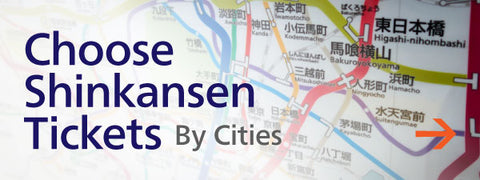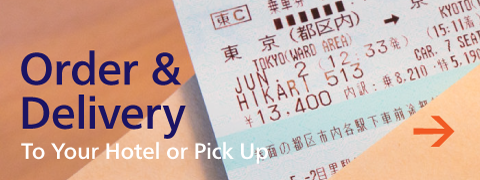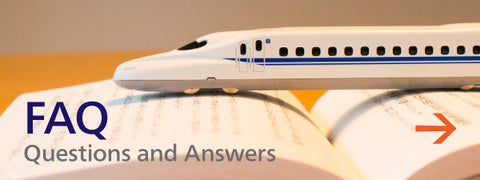- Home
- Ticket ▾
- Service ▾
- Shinkansen Info ▾
- Travel guide
▾
- How to Use Public Transportation in Japan
- How to get from Narita Airport to Tokyo City
- How to access Tokyo Central
- Tokyo Station Guide
- Kyoto Access Guide
- Tokyo to Kyoto Shinkansen
- Weather in Kyoto
- Osaka Access Guide
- Tokyo to Osaka Shinkansen
- Hiroshima Access Guide
- Mt. Fuji Access Guide
- Kyoto to Mt. Fuji
- Hakuba Access Guide
- FAQ
- Cart
Exploring the Enchanting World of YOKOTE's Kamakura Festival

Japan's snowy landscapes bring forth unique traditions, and one of the most captivating is the creation of "kamakura" or snow huts. In the heart of this tradition lies YOKOTE, a city that proudly hosts the annual "Yokote Kamakura Festival" in February, featuring over 100 kamakura structures.
Unveiling the Kamakura Wonders
Step inside these snow dwellings, and you'll find a warm welcome from children gathered around small braziers, treating visitors to delicious grilled rice cakes and sweet sake. Despite the cold exterior, kamakura interiors are surprisingly cozy, inviting you to experience the warmth of both heart and body. Admire the craftsmanship of large kamakura created by skilled artisans and marvel at rows of miniature kamakura crafted by local elementary school students. As night falls and candles illuminate the small kamakura, a fantastical snow world comes to life. Peek inside, and you'll discover the innocent dreams and pure wishes of the children written on notes inside.
With a history spanning over 450 years, YOKOTE's kamakura tradition is deeply rooted. The festival pays homage to the city's past struggles with water scarcity by honoring the water deity within the kamakura. This act of gratitude is said to have transformed "kamikura" (water deity's dwelling) into the familiar "kamakura." In the samurai district, kamakura once served as snow-covered boxes where New Year decorations were placed and burned, adding yet another layer to this intricate history.
Evolving Traditions and Festive Celebrations
Witness the evolution of kamakura over time. Originally, kamakura roofs were made not of snow but straw mats. Today, stylish and contemporary kamakura shapes complement the modern road environment. YOKOTE's snow is even transported to other prefectures and countries, where local artisans craft kamakura with YOKOTE's touch. Amidst these changes, the festival continues to convey the enduring connection between people and snow.
Kamakura Extravaganza: A Feast for the Senses
The Yokote Kamakura Festival, held on February 15th and 16th each year, showcases approximately 80 kamakura throughout the city. Children invite passersby into their kamakura, offering warm hospitality with sweet sake and grilled rice cakes. The festival's origins intertwine with local well-digging ceremonies and the children's snow play, resulting in the vibrant spectacle we witness today.
On February 16th, various groups compete in the "Bonten Contest," showcasing elaborate "bonten" lanterns. The following day, the "Asahiokayama Shrine Bonten Dedication Festival" sees these lanterns paraded to a shrine 3km away. The term "bonten" refers to large decorative banners symbolizing the descent of divine spirits. YOKOTE's bonten are unparalleled in size, elegance, and grandeur, adorned with vivid decorations and towering over 5m in height, weighing over 30kg.
The festival reaches its climax during the shrine dedication ceremony, as energetic participants, surrounded by the intoxicating blend of sweat, steam, joyful shouts, and conch shell sounds, bring the celebration to its peak. Beyond kamakura exploration, the festival offers diverse events such as kamakura photography sessions, mini-kamakura crafting experiences, and exhibitions of snow sculptures and mini-kamakura created by local communities and schools. The Yokote Kamakura Festival promises a delightful and immersive experience, blending tradition, creativity, and warm hospitality in a mesmerizing snowy setting.
Share:
Also in News
Recent Articles
-
Matsumoto Castle — A Perfect Day Trip from Tokyo
September 03, 2025
-
Hello Kitty Shinkansen Schedule Extended Through November!
August 29, 2025
-
World Athletics Championships Tokyo 2025 – Event Guide & Shinkansen Travel Tips
August 19, 2025
-
Koenji Awa Odori Festival – Experience Japan’s Traditional Dance in the Heart of Tokyo
August 14, 2025
-
Hiroshima Castle: A Symbol of Resilience and Renewal
August 04, 2025
-
Pack Smart for Japan’s Summer—and Secure Your Shinkansen Tickets Today!
July 27, 2025
-
Why You Can't Miss the Aomori Nebuta Festival This Summer
July 20, 2025
-
August Travel Rush in Japan — Nozomi Tickets Require Advance Booking
July 12, 2025
-
Discover the Ultimate in Train Travel: Welcome to Gran Class
July 08, 2025
-
Shinkansen Oversized Luggage Rules: Do You Need a Special Seat?
June 30, 2025
Categories
Shinkansen/Express train tickets
How to purchase tickets/FAQ
Shinkansen Ticket.com
© 2025 Shinkansen-Ticket.com.
Seat guide
Reserved Seat (Ordinary Reserved Seat)
Your seat is reserved and secured when you book your tickets, allowing you to head to the station with peace of mind.
Think of it as "economy class" seating.
Green Reserved Seat
Enjoy better seats and free blankets. Popular among Japanese business people, executives, and those who prefer a comfortable travel experience.
Consider it "business class" seating.
GranClass
Known as the "First Class" of Shinkansen seats.
Available only on the Hokuriku and Tohoku Shinkansen lines, these seats offer airline-like amenities and meals (only on select trains).
They are the most expensive option.
Unreserved Seat
You can take any open seat in the unreserved cars on the departure date (no departure time will be indicated on your ticket).
This is the best option if cost is your priority and you are traveling during less crowded seasons or times.







